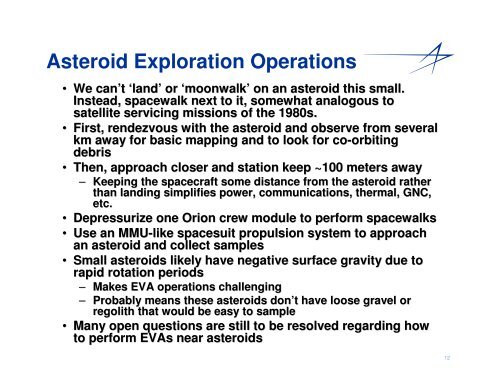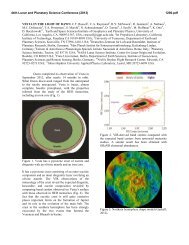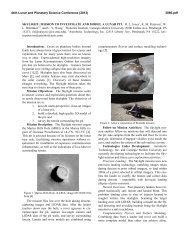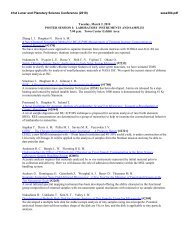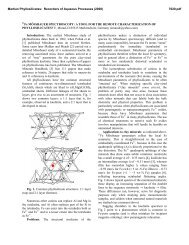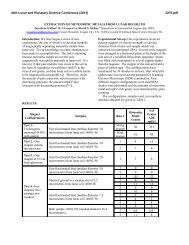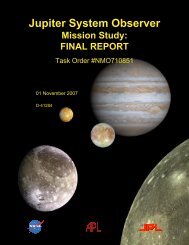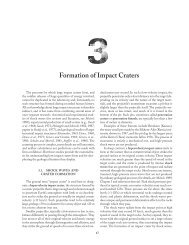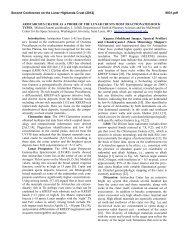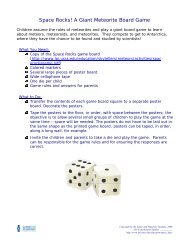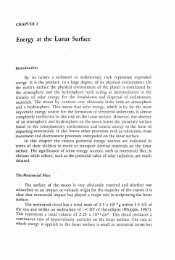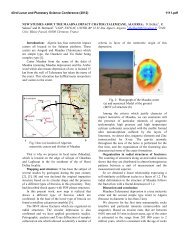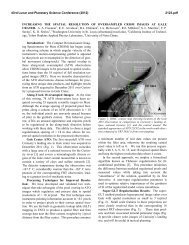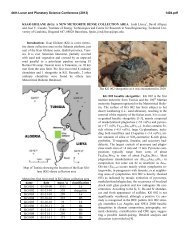Plymouth Rock: An Early Human Asteroid Mission Using Orion
Plymouth Rock: An Early Human Asteroid Mission Using Orion
Plymouth Rock: An Early Human Asteroid Mission Using Orion
Create successful ePaper yourself
Turn your PDF publications into a flip-book with our unique Google optimized e-Paper software.
<strong>Asteroid</strong> Exploration Operations<br />
• We can’t ‘land’ or ‘moonwalk’ on an asteroid this small.<br />
Instead, spacewalk next to it, somewhat analogous to<br />
satellite servicing missions of the 1980s.<br />
• First, rendezvous with the asteroid and observe from several<br />
km away for basic mapping and to look for co-orbiting<br />
orbiting<br />
debris<br />
• Then, approach closer and station keep ~100 meters away<br />
– Keeping the spacecraft some distance from the asteroid rather<br />
than landing simplifies power, communications, thermal, GNC,<br />
etc.<br />
• Depressurize<br />
one <strong>Orion</strong> crew module to perform spacewalks s<br />
• Use an MMU-like spacesuit propulsion system to approach<br />
an asteroid and collect samples<br />
• Small asteroids likely have negative surface gravity due to<br />
rapid rotation periods<br />
– Makes EVA operations challenging<br />
– Probably means these asteroids don’t t have loose gravel or<br />
regolith that would be easy to sample<br />
• Many open questions are still to be resolved regarding how<br />
to perform EVAs near asteroids<br />
12


